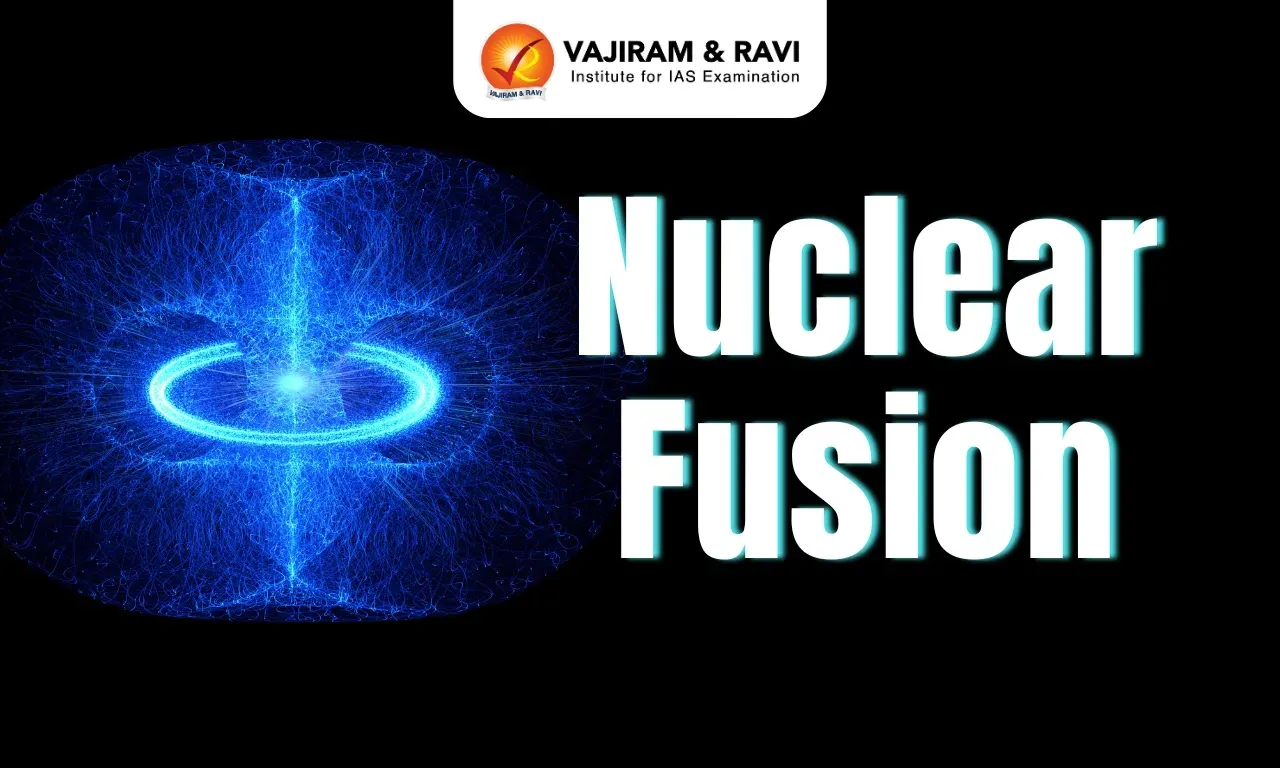Nuclear Fusion
20-02-2025
06:30 AM

Nuclear Fusion Latest News
A world record for nuclear fusion has been smashed after the WEST Tokamak reactor, in southern France, was able to maintain a plasma for more than 22 minutes.

About Nuclear Fusion
- Nuclear fusion is the process by which two light atomic nuclei combine to form a single heavier one while releasing massive amounts of energy.
- The process releases energy because the total mass of the resulting single nucleus is less than the mass of the two original nuclei. The leftover mass becomes energy.
- Fusion reactions take place in a state of matter called plasma — a hot, charged gas made of positive ions and free-moving electrons with unique properties distinct from solids, liquids or gases.
- The sun, along with all other stars, is powered by this reaction.
What are Tokamaks?
- The devices designated for the task of doing this here on Earth—nuclear fusion reactors — are called tokamaks.
- Tokamaks are often also called 'artificial suns' due to the fact that these doughnut-shaped machines replicate processes that occur in the sun.
- There are currently over 200 tokamaks in operation across the globe, with the scientific milestones achieved in these devices developing a roadmap for the operation of the International Thermonuclear Experimental Reactor, or ITER, the world's largest fusion experiment under construction in the south of France.
- A commercial tokamak will aim to use the thermal energy of plasma heated by fusion to heat water, create steam, and, in turn, spin a turbine that generates electricity.
- Fusion can involve many different elements in the periodic table. However, researchers working on fusion energy applications are especially interested in deuterium-tritium (DT) fusion.
- DT fusion produces a neutron and a helium nucleus. In the process, it also releases much more energy than most fusion.
Advantages of Nuclear Fusion
- Nuclear Fusion produces more energy than fission does. Fusion could generate four times more energy per kilogram of fuel than fission (used in nuclear power plants) and nearly four million times more energy than burning oil or coal.
- It also doesn’t produce radioactive byproducts that need to be stored or harmful carbon emissions; it simply produces inert helium and a neutron.
- Unlimited Fuel Supply: The fuel to make fusion happen is simply heavy hydrogen atoms, which can be found in something that Earth has in abundance: seawater. No mining of uranium is required.
- It is much safer than nuclear fission, since fusion can’t create runaway reactions.
Nuclear Fusion FAQs
Q1. What is the best example of nuclear fusion?
Ans. The Sun is the best example of nuclear fusion, where hydrogen nuclei fuse to form helium, releasing immense energy that powers the solar system.
Q2. Which is powerful, fusion or fission?
Ans. Nuclear fusion is more powerful than nuclear fission because it releases 4 times more energy per reaction.
Q3. Is the atomic bomb fission or fusion?
Ans. Nuclear fission produces the atomic bomb, a weapon of mass destruction that uses power released by the splitting of atomic nuclei.
Source: MSN
